We recently published a short introductory video to express who we are at Thinking Nation and our hopes for the history classroom. Here it is!
Category: Doing History
Historical Thinking Paves a Better Way Forward

This week, I came across a statement by the Big City District-University Social Studies Group. In it, the authors write that “social studies must have a prominent role in the ‘build back better’ Conversation.”
They (rightfully) contend that any conversation around equity or combatting learning loss must contain a plan for a robust social studies curriculum in classrooms. Of course, we joyously agreed with their statement and accompanying sentiments. If we want a better way forward, we need a social studies curriculum that is centered on historical thinking.
This week, I also attended an online forum on equity in education in Los Angeles. Throughout the forum, the speakers pointed out the gross physical inequities exacerbated by this past year of virtual learning. Whole families who only had internet through a couple of smart phones had to figure out how multiple children were going to “attend” school every day. In blunt terms, it was impossible.
Focusing on physical inequity is crucial to building a better way forward. We need to ensure that every child has the physical means to grow and learn. But this can’t be the end of the road toward equity. There is still a necessary conversation about what we do now that students have equal access. Do they still have an equal experience?
Unfortunately, the answer is still no for so many communities. Resource rich students are still ill-equipped to sustain the future of our democracy. This is why the above-mentioned statement is so true. In order to overcome the ailments of our society and democracy, we must rethink how students are introduced and taught to engage with the past. To deny the connections between the past and present is to deny reality. We have to teach students to critically engage with the past. We have to empower them to be doers of history, to think historically. When students are empowered to do the above, they can build a more equitable future. They can pave a better way forward.
As we move into the 2021-22 School year, may we re-evaluate how we are teaching social studies to our next generation of engaged citizens. Let’s center historical thinking as a way to empower our students. When our students are confident in their ability to think about the issues of the past, they will be able to intelligently engage with the issues at our present.
Thinking Nation is ready to partner with schools who see this tall order and know that it is time to act. We want to empower students to think historically. They can’t wait any longer.
Historical Thinking Combats Polarization
Why are we so polarized right now? If “the other side” says it, we automatically discount it. We don’t know how to debate, or even argue well. We just yell. We devour information that feeds our own perspective and spit out any information that we disagree with as “fake news.” We are hurting ourselves, hurting our local communities, and hurting our national democracy.
In his 1796 Farewell Address, our first President George Washington warned his country that the “spirit of party” “serves always to distract the public councils and enfeeble the public administration. It agitates the community with ill-founded jealousies and false alarms, kindles the animosity of one part against another, foments occasionally riot and insurrection.” he continues, in words that will jolt the eyes of any modern reader. This spirit of party is “A fire not to be quenched, it demands a uniform vigilance to prevent its bursting into a flame, lest, instead of warming, it should consume.”
We have been consumed.
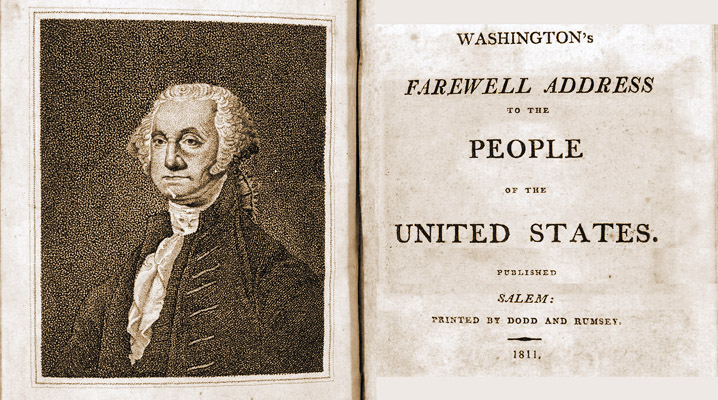
But we don’t have to remain this way. We can still put the fire out. But, like any fire, this is going to take time, a lot of resources, and the skill to do so properly. Within this solution is the core of our curriculum: historical thinking.
When we think historically, we are skilled to navigate evidence appropriately, engage with multiple perspectives, recognize causation, recognize trends, and have the knowledge of historical precedents needed to make informed decisions about our present. Historical thinking is critical thinking. It’s slow thinking, counterintuitive to the click bait culture our social media accounts reward. It’s persistent thinking, willing to engage with a topic enough to actually understand it. It’s empathetic thinking, willing to compassionately understand those we study rather than jump to ill-informed conclusions.
Historical thinking is the type of thinking we need the upcoming generations of citizens to embody if we don’t want to continue to be consumed by the fire of factions and polarization. Let’s slow things down, revolutionize the history classroom, and cultivate a Thinking Nation.
Historical Thinking Cultivates Citizens No Matter Their Time or Place
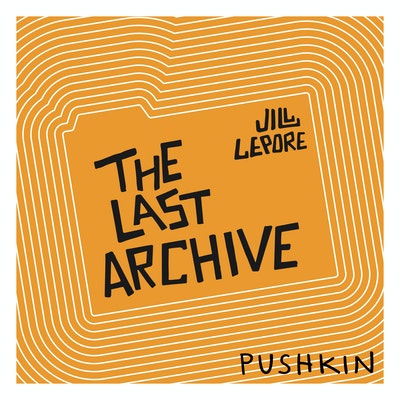
I recently listened to an episode of the podcast, The Last Archive. Hosted by Harvard historian and New Yorker columnist, Jill Lepore, The Last Archive’s current season looks at conspiracy theories and hoaxes in American history. “Who killed truth?” she often asks throughout each episode. In this episode, “Believe it,” she looks at the role of early radio in the 1930s and how it sowed doubt in the American public.
Unable to see what was being said or heard, early radio shows could take advantage of their audience’s gullible sensibilities. For instance, there was apparently mass hysteria when Orson Welles broadcasted his famous “War of the Worlds” in 1938. People around the country genuinely believed that there was an alien invasion. You could hear their fear in subsequent interviews. As Lepore summarized it, if it was on the radio, people believed it.
This of course sounds a lot like much of the “fake news” that can dominate the internet in the 21st century. Unequipped to validate sources, people will take a Facebook or Instagram post at face value, share it to their friends, and before you know it, a fake story has spread to millions of believers. Obviously this is extremely unhealthy for democracy and civic life. Like Americans almost 100 years ago were duped by the new extravagant technology of the radio, we are duped by wild stories on the internet.
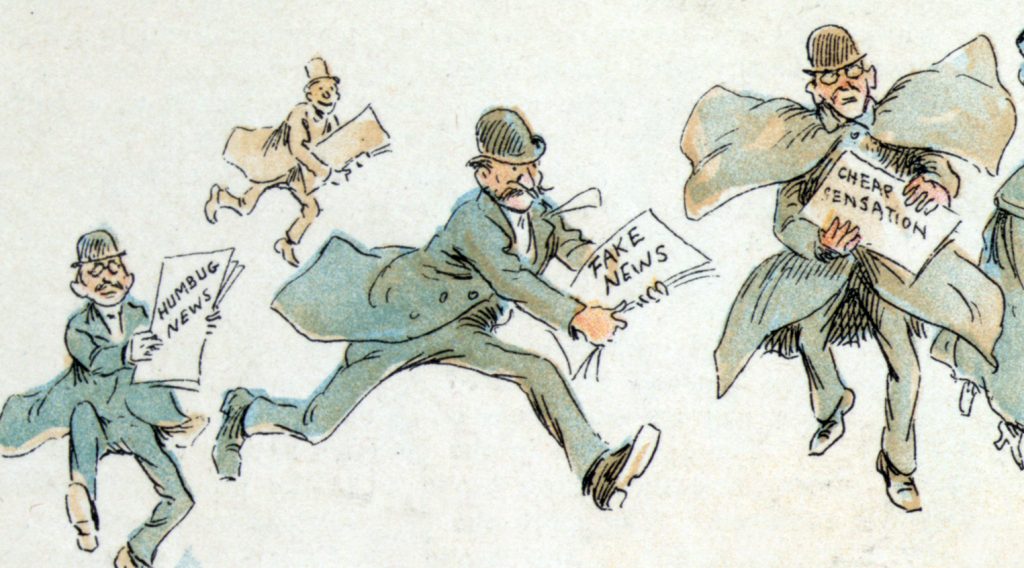
Many people recognize this problem. Whole organizations are dedicated to equipping people to separate fact from fiction on the internet. At Thinking Nation, we applaud these efforts. But we also look to moments in the past like early radio to understand that these moments of doubt are not new. Targeted efforts to combat radio fake news were needed in the 1930s just like targeted efforts are needed today for the internet. But what if there was something broader and more holistic to combat these issues? There is! Historical thinking.
We place so much emphasis on historical thinking at Thinking Nation because we believe that these skills transcend time, place, and space. Using history to teach students to interpret documents, events, and their outcomes in the general can equip students to separate fact from fiction in the particular. Historical thinking allows our conversations to be richer, our evidence to be sound, and our arguments to be strong. Join us at Thinking Nation as we prioritize historical thinking in order to cultivate thinking citizens.
We’re Cultivating Historians, Not History Enthusiasts
A few weeks ago, our blog was entitled “Knowing History vs. Doing History.” In it, we briefly brought up the difference between a historian and a history enthusiast. History enthusiasts may know history, however, rarely do they “do history.” Today, we’ll take some more space to illuminate this distinction.
In the world of history, there tends to be two types of people interested in the past: historians and history enthusiasts. The former tend to explore the past in such a way to form arguments, riddled with nuance, exposing history’s complexity. Their study of the past does not stop at knowing what happened, but rather understanding what happened. This could take the shape of seeking out the causes of events, comparing eras or events, contextualizing a specific action within a larger setting, or even taking a broader approach and dissecting how things change or stay the same over time.
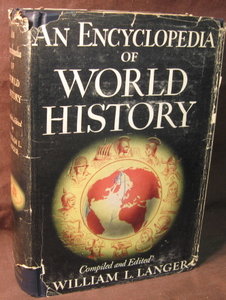
The interest of the history enthusiast is less complex. Fascinated by quirks of the past, the history enthusiast emphasizes unique ‘tidbits’ of information. This allows them to have an encyclopedic knowledge of whatever era or topic they are most interested in, but does not necessarily contribute to the complex vision that professional historians seek after.
Of course, the above examples of how historians explore the past embody the “4 C’s” that our curriculum is centered on: Causation, Comparison, Contextualization, and Change and Continuity over Time. When students interrogate the past through these historical thinking skills, the past becomes alive. Rather than being a stagnant pond full of facts, it becomes a roaring river with rocks and rapids to navigate. It becomes a journey of exploration, not merely a preordained pathway of knowledge.
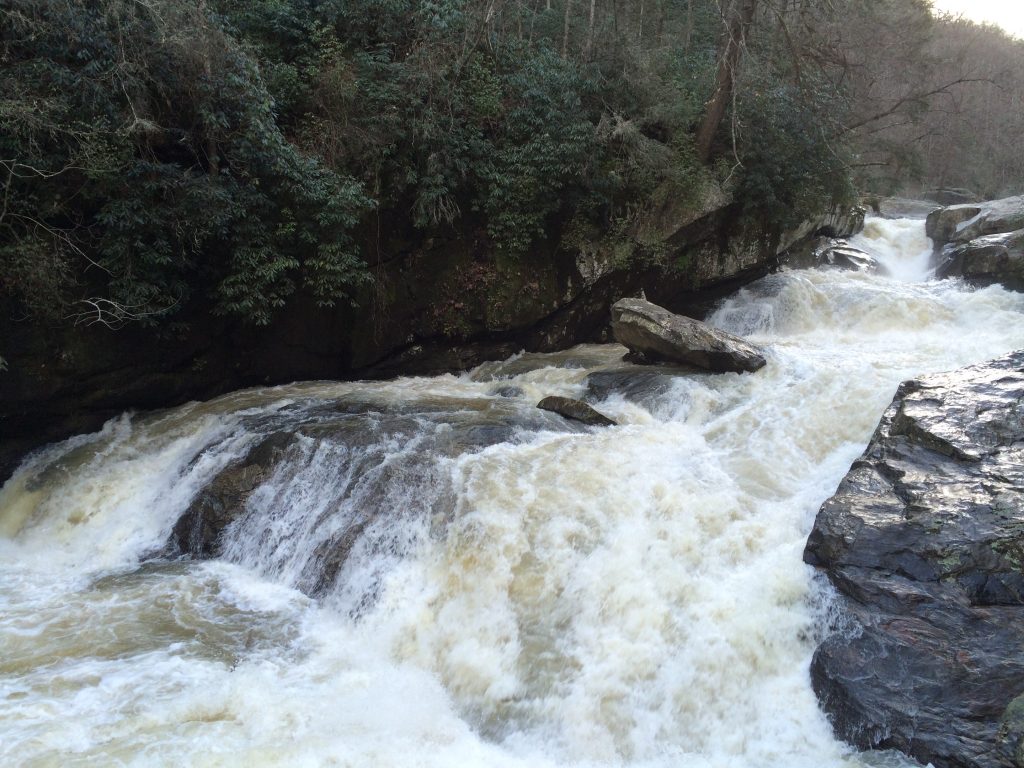
So, as we reflect on this difference, may we ask: What type of history are we teaching in our classrooms? Are we relaying information about the past with simple, albeit witty, stories that may draw interest? Or are we equipping our students for the rapids of history, cultivating the necessary skills for them to construct knowledge and form arguments about the past? The former may be a helpful segue to grab attention, but it lacks depth. We must cultivate historical thinkers if we want to build up a thinking nation.
History Does Not Have to be Familiar to be Relevant
When most people talk about history needing to be relevant for students, I fear what they mean is that it needs to be familiar. These voices argue that if a historical subject is too different from the students that learn it, they’ll just tune out. Or that students need to see themselves in the past in order for it to be meaningful in the present. While there are some truths to this, I fear that if we cling too tightly to this false equivalency, that familiarity = relevance, our students will miss out on just how great history is.
To be fair, the motives behind this false equivalency are good. Unfortunately, so many students are taught a specific narrative about the past that neglects the beautiful diversity of past characters. History is often taught from a purely political lens, leaving out the rich social, cultural, economic, and religious aspects. Or, even worse, history becomes a hagiography, where it is just a series of biographies of the past’s “great men.” These approaches to history miss so much richness, and it is true, can be very hard for students to be attracted to, especially if they can’t see themselves in those stories. We need a history curriculum that highlights diverse voices and perspectives and avoids simply conveying some grand narrative whose only grandeur is that it has been repeated over generations. Mere repetition does not make something more true.
Still, if we try to right this wrong by only focusing on whatever history is clearly connected to our present moment, we make history something that it never was supposed to be.
History is not meant to serve the agenda of the modern mind.* Just as historians rightly point out when politicians quote historical anecdotes just to show that they are “on the right side,” we must also challenge history curriculums that are all too directly tied to our current cultural moment. When we only focus on this history that is familiar or supports our current trends, we enable our own narcissism, believing that the past is just meant to serve our needs. It wasn’t.
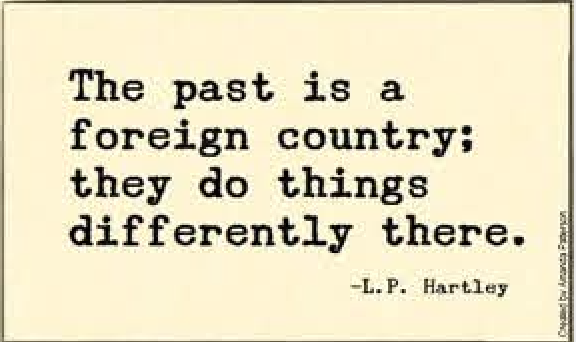
As novelist L. P. Hartley opened one of his novels, “The past is a foreign country, they do things differently there.”
It is ok for the past to feel very foreign, or unfamiliar, when we study it. This lack of familiarity has the ability to humble us. It forces us to have empathy for those we study. It forces us to get out of our modern bubbles and seek to understand those not like us. It gives us the dispositions to navigate a world where people grew up differently from us, worship differently than us, adhere to political parties opposite of us, or uphold different customs from us. When we study an unfamiliar past, we better fit in with the human family. We see humanity in others before anything else. We have better ears for listening and better hearts for understanding. This has a much deeper relevance than simply making sure our students can see themselves in the past. It helps us become better people, ready to learn from those we’ve been told are so different from us.
At Thinking Nation, our goal is for students to engage with both the familiar and the foreign in the past. They can learn from stories they feel strong connections to, while at the same time seek to understand stories where the connection isn’t clear. Through this, they can be better citizens in both the U.S. and the world.
*Here, it is important to acknowledge that there is nothing wrong with our modern mind influencing our focus for our own study of history. Often, our own political, social, or cultural goals influence what parts of the past we want to uncover. Still, we must avoid trying to make the past fit into our present conceptions. There often will not be any subject that is a perfect fit for what we are looking for and we need to be able to wrestle with that complexity without simplifying past stories to fit our own outlooks.
Knowing History vs. Doing History
In last week’s blog, we emphasized the importance of depth over breadth. In recognizing the fact that we can never “cover it all,” teaching the depth of history over covering as much content as we can actually gives freedom to teachers. Not stressed about how much they need to cover, teachers can dive deep into particular historical subjects with their students in an effort to equip students to think historically. This brings us to today’s blog topic: Knowing History vs. Doing History.
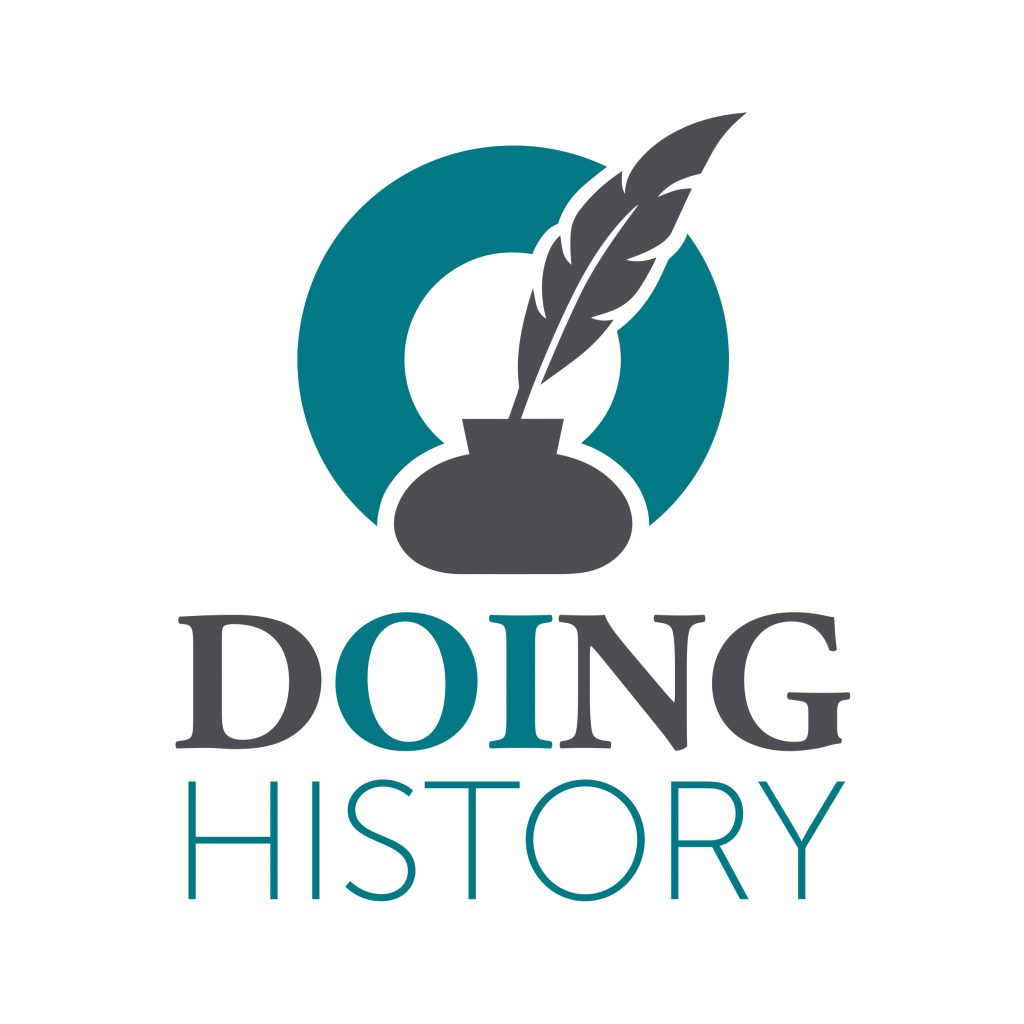
First off, as we wrote about in our first ever blog, history is not merely “the past,” but the study of the past. With this in mind, “knowing history” does not simply mean knowing a lot about the past. Still, for the sake of today’s blog, that’s exactly how I want us to see it. Often, when people hear others spout off knowledge about the past, they respond with, “You know a lot of history!” This misrepresentation of history exists everywhere, from classrooms to movies. The fact is, while historians do in fact know a lot of history, this is not what makes them a historian. We must differentiate between the history enthusiast (those who love to collect tidbits about the past in a knowledge closet) and a historian. Historians do not merely know history, they do history.
This idea, of “doing history,” is at the heart of our curriculum at Thinking Nation. We don’t simply want students to passively receive historical facts (or a particular historical narrative) from their teachers. We want students to actively engage with the past, interrogating it in order to make meaning of the world that came before them. This is historical thinking. This is doing history.
Knowing history can puff up people as walking encyclopedias, quick to tout their knowledge superiority, but this does not produce the empathy and humility that results from being able to think historically. When we can “do history,” we can wrestle with competing accounts and narratives, we can investigate past stories, and we can learn to understand those that are foreign to us (even if not foreign in space, historical actors are foreign in time). This is not only more fulfilling than knowledge acquisition (we aren’t giving students fish, we are teaching them to fish), it is a humbling endeavor.
Furthermore, doing history not only makes us better historians, it also strengthens our critical thinking skills for all subjects. When students are equipped to think historically (to do history), they are better prepared to investigate robust math equations, analyze complex literature, and solve present scientific issues. The ability to merely cite various historical events does not have such interdisciplinary applications.
This is why we must prioritize depth over breadth. We must prioritize doing history over knowing history. When we do this, we empower students to actively engage with the past, and in turn, cultivate thinking citizens.
Depth > Breadth
“You can never cover it all.”
If there was a slogan that we history teachers should put on the front of every yearly plan, unit plan, or lesson plan, it should be this. In an education environment where history teachers are guided by chronological standards, it is no wonder that we often feel discouraged toward the end of the school year, lamenting what we have to cut out for the lack of time. I’ve heard “We just couldn’t get to it this year” countless times from colleagues. Unfortunately, the content-coverage approach to teaching history makes us feel rushed and dissatisfied with our results each year. It doesn’t have to be this way.
At Thinking Nation, we prioritize teaching historical thinking over content. We recognize that it will always be impossible to cover every important part of the past. This also means that it is impossible to make sure that every voice is heard or every story is told, even if that story is incredibly important to us or some of our students. But that doesn’t mean that our history classrooms cannot be incredibly impactful.
If we teach students how to think historically, they can apply those skills to historical topics that they are most interested in. Like in university-level history classes, students can engage in research projects where they apply the thinking skills that have been cultivated in their history classrooms in order to pursue historical knowledge on a topic of their choosing. Not only does this allow the content to feel more relevant to themselves, but it also pushes them to be actively engaged with the study of the past, not merely passive receivers of historical information. This is empowering.
If we focus less on the breadth of what we cover in class and more on the depth in which topics are engaged with, students can experience the power of doing history. They can be equipped to tackle any topic they feel pulled toward both in and outside of the classroom. No matter the subject in school, the major in college, or the career path they choose, when students are empowered to think historically they can apply those skills to be the leaders and agents of change we hope for them to be. That is far more important than knowing “at least I addressed such and such topic.” So, let’s prioritize depth over breadth when teaching the past in an effort to equip and empower our students for what lies ahead.
And if there was a second slogan, perhaps it should be:
“You will never get it perfect.”
And that’s ok.
The Power of Resistance: Harriet Jacobs’ Story
This week, we’re going to veer a little from our normal coverage of teaching and doing history and look at a particular story from the past. This past week, I’ve been working on a new DBQ for our Ethnic Studies curriculum, which will be available to partnering schools next school year. For research, I read Harriet Jacob’s famous slave narrative, Incidents in the Life of a Slave Girl, which she wrote as “Linda Brent” knowing the potential repercussions of using her real name given her own personal story.
Harriet Jacobs’ story is so important for us to understand the lives of the enslaved in 19th century America. Even though I’ve read around her book for years, it was humbling to finally dive into the whole thing. At one point in her autobiography, she writes, “Slavery is terrible for men; but it is far more terrible for women. Superadded to the burden common to all, they have wrongs, and sufferings, and mortifications peculiarly their own.” Her narrative demonstrates just how hard her life was as an enslaved woman.
When she turned 15, her enslaver, Dr. James Norcom (in the book she calls him Dr. Flint) began to sexually harass her and “began to whisper foul words in my ear.” He even built a cottage on nearby land for Jacobs to live on so that he could have his way with her without drawing attention to his wife or the local town. Jacobs, determined to not let this happen, had sexual relations with a local white man and became pregnant. For her, “It seems less degrading to give one’s self, then to submit to compulsion.” When her enslaver told her to move to the cottage, she retorted, “I will never go there. In a few months I shall be a mother.” Norcom “stood and looked at me in dumb amazement, and left the house without a word.”
In a rather unique, but no less empowering way, Jacobs resisted her enslavement and her enslaver. In a culture where enslavers became rich off of human chattel from their own lust, raping their female slaves, Jacobs resisted. While she did struggle with her own moral conscience given her choice, she was determined not to let her enslaver’s greed and lust control her life and the lives of her children (she ended up having two children with the abovementioned man).

Jacobs’ story only grows in intensity. She ends up having to hide in her grandmother’s attic for 7 years, hearing and seeing her son and daughter, but unable to speak with them. After those 7 years, she was able to make her escape thanks to a local free black man’s keen awareness. She goes up to New York and is reunited with her daughter in Brooklyn, and then later, her son. Jacob’s story is one of victory. Although her trials were unspeakable, she persisted. She lived a long life in freedom with both of her children, an outcome that never existed for millions who were in bondage on American soil.
Jacob’s story is powerful and emotional and we are humbled to share her story as a part of one of our DBQs on American history.
Our Professional Development Empowers and Equips Teachers
Today is our 30th blog! In the last 30 posts, we’ve defined key ideas like history, historical thinking, and its examples. We’ve explored the relevancy of the U.S. Constitution to our current moment, we’ve explored the richness of the historical discipline and its historiography, and tried to understand the present by looking to the past. At Thinking Nation, we want to equip all stakeholders in history education for their various roles. At the heart of our mission is to cultivate thinking citizens in our students through our historical-thinking centered curriculum. But just as important, we want to equip our teachers to be agents of change in a teaching revolution. This is why we prioritize professional development for all of our partners.
Practically, we want to make sure teachers understand our DBQ process, our scaffolded lessons, and our online platform. But good teaching isn’t just understanding the mechanics. It’s being inspired to walk into class every day, knowing that we teach the most important subject for sustaining our democracy and civic society. We are not merely conveyers of knowledge. We are empowering students to be the best they can be by teaching them to think critically and better understand where we are by understanding where we’ve been. As the ancient Roman statesman Marcus Tullius Cicero put it, “to be ignorant of what occurred before you were born is to remain always a child.” By teaching history and historical thinking, we are cultivating mature citizens.
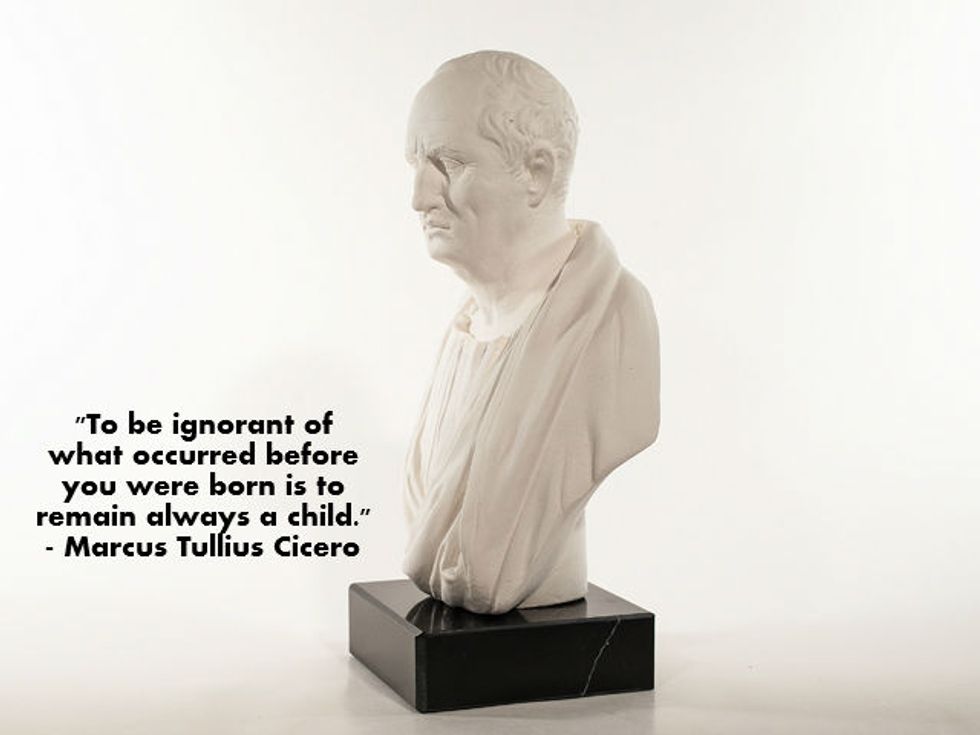
With this ethos driving our mission, our professional developments seek to reinvigorate history educators in their own missions. Like a conference does for so many of us, PDs should provide us a renewed sense of purpose in our vocation. This is why our PDs focus on both the philosophical and the practical. Once we are reminded of just how important history education is, we can understand the mechanics in our mode of teaching. It’s not until a person understands the beauty of a car that working on it has meaning. The same goes for teaching!
As we seek to cultivate thinking citizens, empowered by their ability to think historically, we want to equip teachers with both the understandings and dispositions to be successful in doing so. When schools join us in this mission, we ensure that educators feel inspired, supported, and equipped, starting with the professional developments we provide.
Why Having Outside Graders Can Help Your Teaching
As part of our DBQ-based curriculum, we wanted to provide grading services for partnering schools. We believe that part of cultivating thinking citizens through the teaching of historical thinking is providing teachers with the tools and time to do so. But giving teachers back valuable time with our grading services is not the only reason having outside graders is helpful. Today’s blog is more on the practical side of our blogs, but it is just as significant for realizing our mission of cultivating thinking citizens.

First: time. As a department head, I noticed that one of the biggest obstacles for getting students to complete robust tasks that required deep thinking, analysis, and writing, was the grading that resulted for the teacher. On average, for every DBQ I administered to my 130-150 students, I spent 12+ hours of my weekends grading. I wanted to ensure that my students received their grades with feedback in a timely manner so that the topic and skills were still fresh on their minds and so I could do any reteaching that appeared necessary based on the results. Getting this amount of time from all teachers, on top of their many other responsibilities, was difficult. Teachers have hundreds of daily responsibilities, and many of those have to wait till after the school day. So giving that time spent grading back to teachers while still allowing them to implement rigorous assessments was huge for creating more buy in.
Second: Data and Vertical Alignment. Cultivating thinking citizens is a marathon, not a sprint. To truly equip students, teachers must partner with teachers across grade levels. When this vertical collaboration happens, teachers can best meet the needs of students throughout their academic careers. Having access to uniform data assessing the same standards over those years is crucial for the development of deep thinking and analysis. When schools use our platform and grading services, they can do just that.
Third: Bias. Of course, the issue of teacher bias when grading can be contentious. But there is plenty of research out there that reminds us that teacher bias when grading most often impacts students in minority populations (Just do an internet search of “teacher bias when grading” for dozens of research-based articles on this topic). But getting even more granular, all of us teachers have said “well they tried,” or “but they didn’t do the prework!” when we grade. Our grades for those individual students, then, reflect more than just the essay they’ve produced. Whether this is fair or not (we can save that debate for another time), it does not accurately reflect the student’s skills on that given task. This only hurts the vertical alignment previously mentioned and clouds the specific scaffolds that may be needed to further student growth. Teacher bias is inevitable, but when grading is done from an outsider to the classroom, unable to know the details of a particular student, then only the assessment at hand is being graded, nothing more. This removal of bias in the grading process ensures clarity and accuracy in the grading process, allowing for student needs to be met and for growth to occur.
We want to cultivate thinking citizens. Due to time constraints, the need for data and vertical alignment, and the potential for teacher bias when grading, having outside graders assess student work on a uniform rubric can truly elevate student work and empower them to be deep, historical thinkers. For this reason, at Thinking Nation, we have expert teacher-graders to provide clear and helpful feedback for both teachers and students on student writing.
History Teachers are Literacy Teachers, Too
Last week, we focused our blog on the need for a revolution in teaching history. Content-knowledge can no longer be the end goal of a history education. Content is merely the means to an end of creating historical thinkers. To be a historical thinker, though, literacy is key.
Often, when school administrators or instructional coaches remind their history departments that “they teach literacy too,” it almost sounds as if the history teacher is only providing a supporting role for the more important English- Language Arts teacher and curriculum. After all, at least in California, it is the ELA standards that are assessed by high-stakes state exams. But this assumption profoundly misunderstands the power of a history education, centered on historical thinking, in cultivating both thinking and literate citizens.
In fact, many of the Common Core standards in literacy may in fact be best suited for the history classroom. When we look to the news, social media, or the political landscape, these common core skills (citing textual evidence, identifying a central idea, defending a claim, etc.) are rooted in history. When people look for the present moment to be contextualized or understood more clearly, they often look to historians to make relevant judgments. In fact, in the world around us these skills of literacy are almost always rooted in the study of the past.
With this landscape in mind, part of the needed teaching revolution is for history teachers to reclaim their role as primarily teachers of literacy. We want students to be able to interrogate documents, identify key evidence, and make defensible claims with that evidence. Yes, when many in education hear these goals, their minds quickly go to the English classroom and the Common-Core standards privileged in those classrooms. But the history classroom has so much to offer here. Not merely as a support role, but as leaders in equipping students in literacy.
For this reason, Thinking Nation’s rubrics are clearly aligned to Common Core standards. For students to be successful on our DBQs, they must be able to craft claims, cite evidence, identify central ideas, and write in a professional style. When we teachers require this type of writing and analysis of our students, we reclaim our role as teachers of literacy. We bring about opportunities for interdisciplinary collaboration, demonstrating to students just how transferable the skills they gain in the history classroom are to their entire education.
A Needed Teaching Revolution: The Importance of a Skills-Based Curriculum
Teaching history in schools needs a revolution. For years, the primary way to teach history, and measure student learning of history, has been content, content, content.
“Do you remember this event from the past? No?! Then you don’t know history!” This attitude toward history needs to change and is one of the primary reasons we began Thinking Nation.
As you’ll recall from previous posts, history is not merely the past, it is the study of the past. History is a discipline. It is a process, not an outcome. It changes over time, it necessitates multiple perspectives, and it takes time.
Often times, ensuring that students know a particular topic is the primary aim of the history teacher. While there are noble reasons for this, it should not be our primary aim. If our students know about many important people, dates, and events, but do not know how to think about those things, they may be walking encyclopedias, but they are not historians. To be historical thinkers, students must be able to contextualize those people, dates, and events. They must be able to identify patterns, make comparisons, and understand causation. Of course, this does not mean that the content of history should be neglected. After all, if historians have nothing to think about, they cannot be historical thinkers. Still, the content of history should be our means to the end, not the end in and of itself.
At the heart of our curriculum is the idea that when students think historically, they are better citizens. They can think critically about their own time and place in the same way they think critically about the past. They have the skills and dispositions to navigate the present moment in an analytical way. This is why our skills-based curriculum goes deeply into specific areas of history rather than providing a cursory view of a broader range of topics. By doing this, students are empowered to analyze the past and draw their own evidence-based conclusions, not merely absorb the narrative that their teacher or textbook tells them. History becomes a dialogue, not a lecture. History becomes active. Historical thinkers are cultivated.
To do all of this, though, we have to re-think our teaching of history. We need to be willing to a spend large amount of class time on a small amount of topics. We need to prioritize depth over breadth. We may not be able to cover all of the things we used to, but our students will be equipped to better remember what we do cover and be equipped to think – the ultimate tool we can give our students.
Join us in this revolution to teach historical thinking. May we cultivate thinking citizens and build up a thinking nation.
The Importance of History in Honoring Black Americans
For the month of February, we have used our blog to pay respect to Black history. In the first week, we looked at the document we cherish, the Consitution, and wrestled with its flaws. Multiple times, it allowed for the continuation of slavery and protected enslavers. Thank God for amendments! In week 2, we looked at the people who operated Mount Vernon: George Washington’s enslaved workers. Last week, we looked back at one of the greatest Americans to ever live, Frederick Douglass, and his prophetic role in American history. This week, we’re going to look at the larger importance of Black History Month.
Black History Month has its origins in “Negro History Week” which was launched in February of 1926 by Carter G. Woodson, the “father of Black history.” Woodson, a Harvard-trained historian, was born in 1875 to former slaves. His life as a historian paved the path for Black history to be an integral part of American history, even if it took generations after him for Black history to be treated with the respect it deserved from the academy. Woodson recognized something before so many others: that Black history is American history and that the more we know about the history of Black Americans, the better we can understand the nation that claims to prize “liberty and justice for all.”
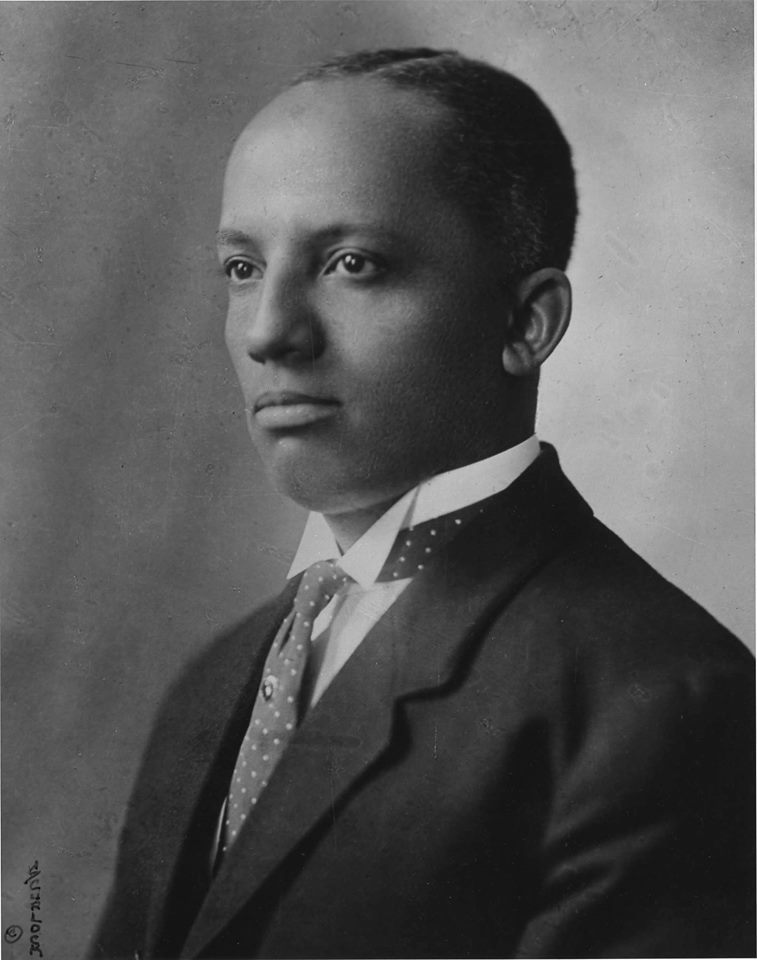
In our first blog post, we looked at the definition of history—the study of the past. Since then, we have constantly referenced this definition. Understanding it is vital to recognizing its importance in uncovering the past and how that past shapes, and is shaped by, our present. When Woodson debuted “Negro History Week,” America was in the depths of Jim Crow. Black Americans were individually and systematically discriminated against by white Americans who refused to acknowledge their humanity. The history they were taught only confirmed these prejudices. Woodson understood this. He recognized that if an accurate American history was portrayed, one which equalized the voices of Black Americans with white Americans, people would be able to engage with the accomplishments, the contributions, and of course, the humanity of Black Americans.
Once we recognize that history is not merely the past, but the study of the past, we can be open to the truth that there is more history to uncover, more history to learn, and more history to engage with. Narratives can change and despite what political pundits will have us believe, that is a good thing. It means we are wrestling with the past, not just passively receiving it as fact.
So, as Black History Month comes to a close, may our study of Black history only continue. We live in a moment where there is still racism, both individual and systemic. We must collectively combat this fact of our present. And we can. When we elevate the stories of Black Americans, we elevate America. The narrative, perhaps of America’s exceptional greatness, may shift, but this is not a bad thing. When our collective understanding of the past represents who we are as a collective, we all grow. When we see Black history as American history, we can better see citizens who may look differently or believe differently from us as equals rather than others. “We the People” becomes an accurate description of all Americans, not simply the founder’s ideal.
Frederick Douglass and America’s Double Standard
For those of us fascinated by Frederick Douglass, February is an especially important month. While he never knew his actual birthday, he celebrated it on February 14th. Then, on February 20th, 1895, Douglass died in the entryway to his home in Washington, D.C. Tomorrow is the 126th anniversary of the great abolitionist, orator, and writer’s death.
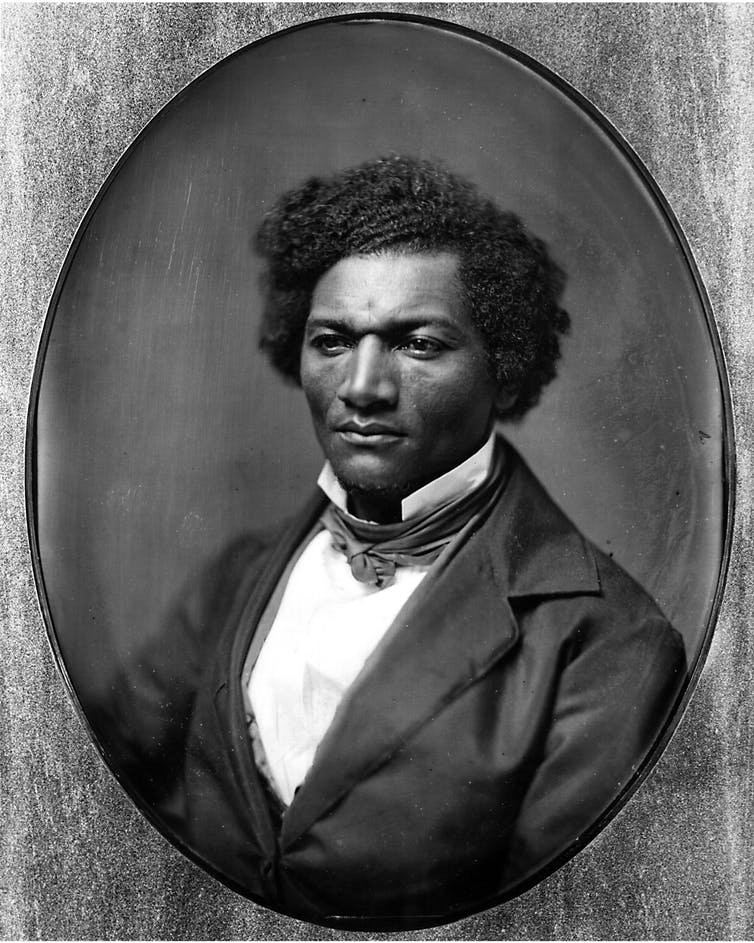
Frederick Douglass often appealed to the contradiction he saw in American society: a people who cherished their liberty but held millions in bondage. This theme spans decades of his work and is demonstrated in a variety of contexts. At the heart of his message was the idea that America was holding a double standard. The liberty and rights claimed for all Americans in the Declaration of Independence and Constitution were, in practice, only apportioned to white Americans, perhaps even only white men.
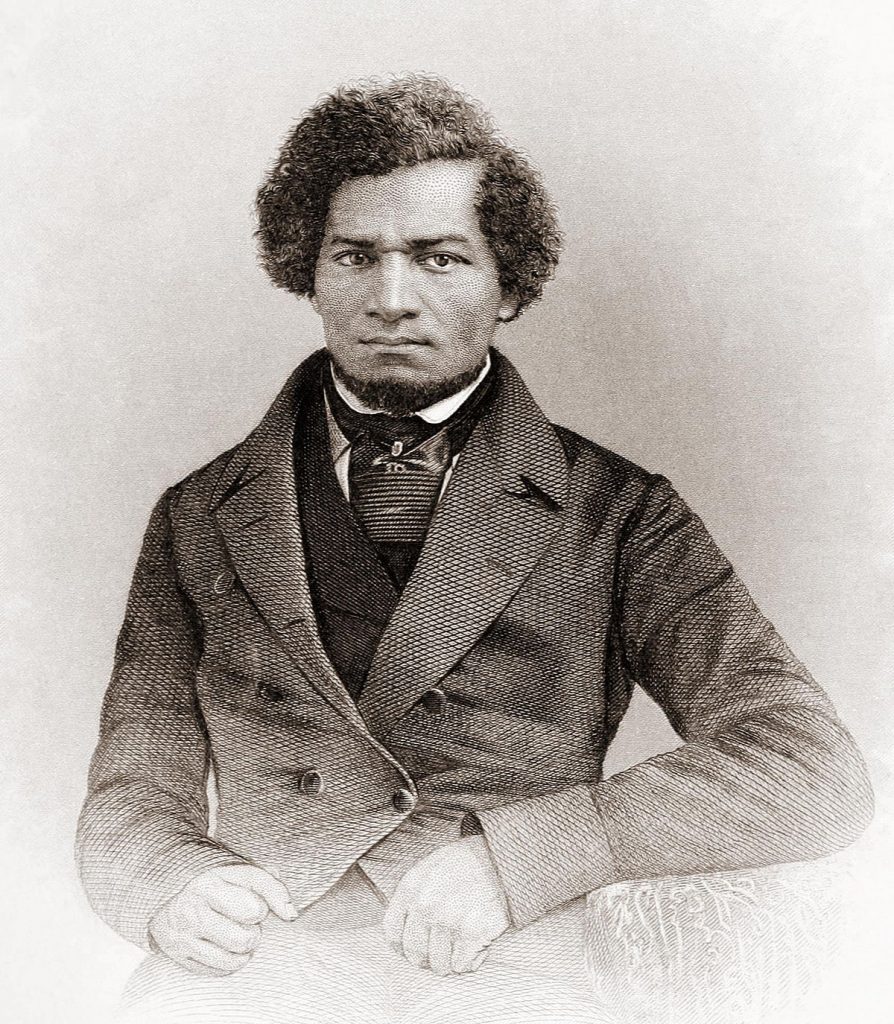
Shortly after his escape from slavery, and immediately after he returned from a two year time in Great Britain, Douglass was distraught. The very country that took away the liberty of the rest Americans treated him with dignity and respect. In his words, “I went to England, monarchical England, to get rid of democratic slavery.”
Throughout much of his writing, Douglass referenced the principles of the U.S. Constitution and the Declaration of Independence. Among these principles, his writing emphasized that the government’s job is to protect the rights of its people. In 1847 he called for the “Constitution [to be] shriveled in a thousand fragments.”
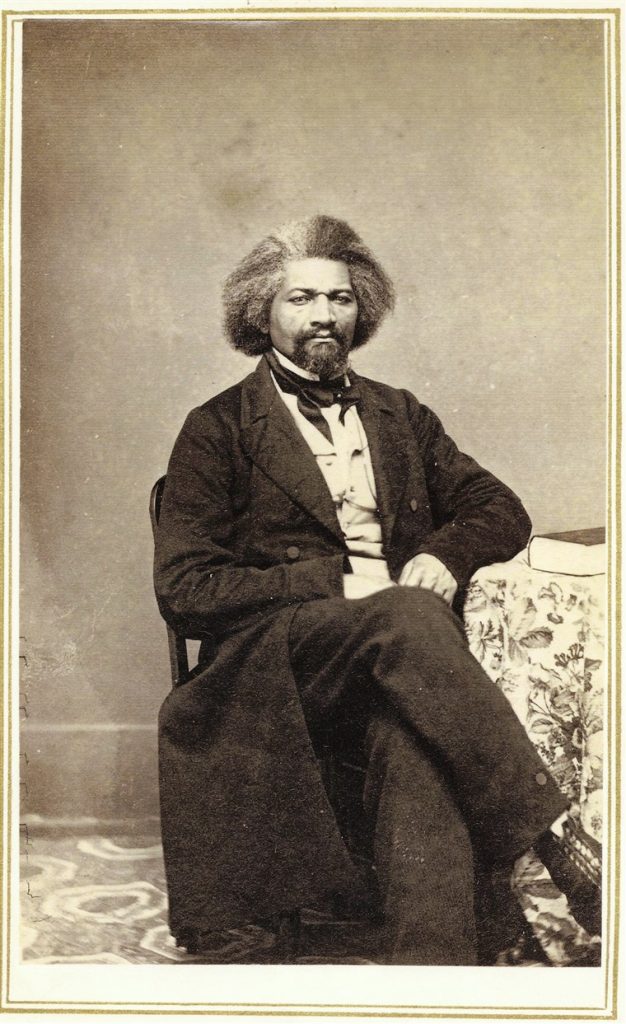
In a different context, in his 1852 speech, “What to the Slave is the 4th of July?” he declared that “The principles contained in that instrument (the Declaration of Independence) are saving principles.” Interestingly, despite his stinging words against the Constitution in years prior, he affirmed what many of his white contemporaries would have agreed to—the principles of the Declaration of Independence were principles worth following. These principles he advocated to “be true to… on all occasions, in all places, against all foes, and at whatever cost.” By 1852, Douglass had changed to believe that the Constitution was in fact an antislavery document. Then, he was not shy about calling out that Americans had not adhered to those principles. It was in this speech that he devoted most of his words to defending his observations “that the character and conduct of this nation never looked blacker to me than on this 4th of July.” Using the very occasion to celebrate America’s birthday, Douglass called his audience back to its founding principles, reminding them of the nation’s failure to uphold them for all people. Americans were not holding true to their goals, and Douglass felt it his duty to open their eyes.
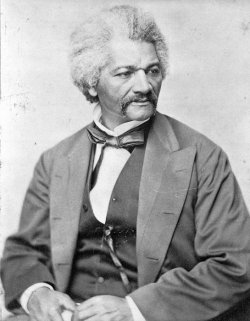
Then, in 1865, in reference to asserting African American’s rights, he asked for “not benevolence, not pity, not sympathy, but simply justice” for “the colored people.” This justice found its basis in the “saving principles” of America’s founding documents. Douglass asked for nothing more than for these principles to be applied to African Americans, as they were White Americans. He wanted the simple justice of “the Negro’s right to suffrage.” It is here, too, that he decries America’s inability to extend this same right to women. Simply, and to applause, Douglass declared, “I hold that women, as well as men, have the right to vote.” The double standard of American liberty did not stop at the white-black dichotomy, but also between women and men.
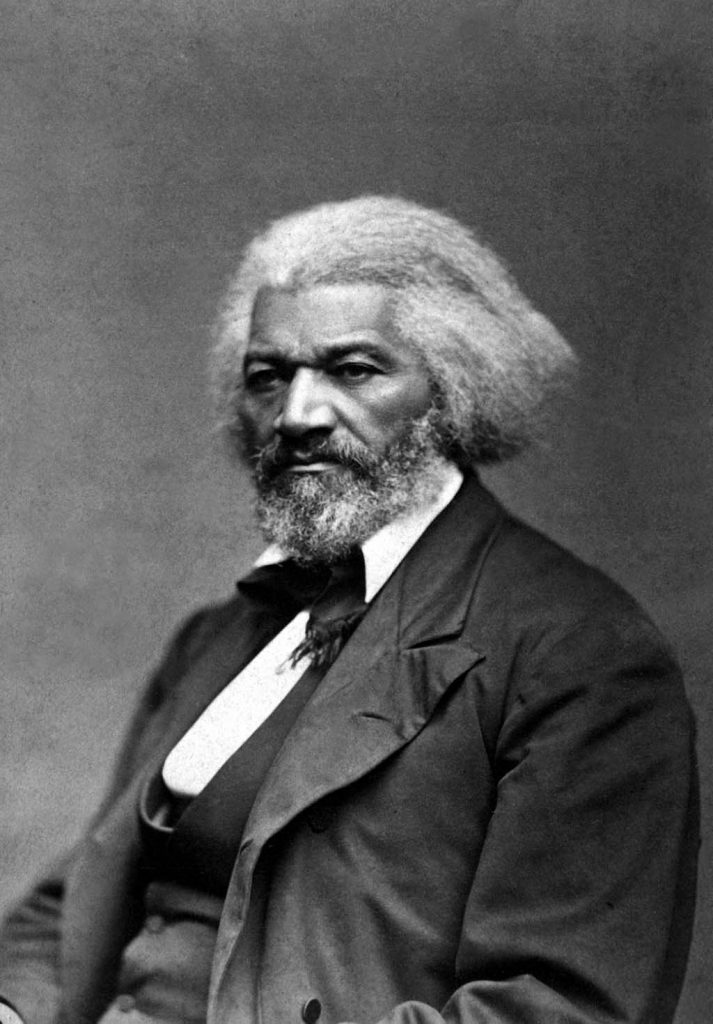
Douglass would at times put forth the responsibility for change on his fellow African Americans, wanting them to ask themselves “What am I doing to elevate and improve my condition, and that of my brethren at large?” Still, it must be seen that he believed that until America reconciled its double standard of liberty, equality-for-all could not be guaranteed. America could not simply rid of this disparity by sending African Americans away. Throughout his writings and speeches, he called to action both white and black Americans to break down the splintered scaffolding that rested on the “saving principles” of America’s founding in order to rebuild a sturdy frame on a sturdy foundation. Because, after all, African Americans “are here and are here to stay.”
Douglass was an American hero. He chastised his country as a prophet and worked tirelessly to bring about real equality. He embodied historical thinking. We would do well to live in his legacy.
The Silent Graves at George Washington’s Mount Vernon
On Monday, the country celebrates George Washington’s birthday, our first president. If bodies didn’t decay, he would be 289 years old today. But you might ask, why write about Washington for a blog during Black History Month? Today, we’ll use his birthday to commemorate a different group of people who lived at his Mount Vernon estate: the men and women he enslaved.
At the time of his death, 317 enslaved men and women lived at Mount Vernon. While he did put it in his will to free the people he owned upon his death, this did not mean those 317 were emancipated when he left this life. More than half of those slaves, under his wife’s estate, remained in bondage.

Washington is a complicated person. He was an enslaver. He even wrote down that physical force (beating and whipping) was perfectly acceptable if a slave needed to be prodded to work harder. Weirdly, he also wrote in a 1786 letter to Robert Morris, “I can only say that there is not a man living who wishes more sincerely than I do, to a see a plan adopted for the abolition of it [slavery].” Whatever his internal will actually was in reference to this statement, his actions don’t help him.
When President George Washington resided in Philadelphia, he brought some of the people he enslaved with him. One of those, Ona Judge, was Martha’s maid and seamstress. In the years of living among the free black population in Philadelphia, she was inspired to become free, and so as the Washington’s packed to go home to Mount Vernon for the summer in 1796, she packed for her escape. Eventually fleeing to New Hampshire, Washington pursued her for 3 years, offering rewards for her capture and even sending someone to New Hampshire to “convince her” to come back. She didn’t. She remained a fugitive for the rest of her life. Against the wishes of her enslaver, Washington, she chose freedom.
Other than Judge’s story, which is well documented in Erica Armstrong Dunbar’s Never Caught: The Washingtons’ Relentless Pursuit of Their Runaway Slave, Ona Judge, many of the lives of the enslaved at Mount Vernon are not well known. However, if you have the chance to visit Mount Vernon today, you will see a strong effort by the estate to highlight the lives of the enslaved. There are tours dedicated to their hardships, there are replicas of their bleak slave quarters, and most moving, archeologists are currently excavating the enslaved community’s cemetery to properly document graves and pay appropriate homage to those who lived and died on Washington’s plantation.

Three years ago when I visited, my students and I walked the long path down the hill from the Washington mansion to the slave cemetery. We sat, read some of the markers, and took it in. Then, a reenactor, dressed in 18th century clothing, began playing the ute. After playing some songs that were clearly from Washington’s era, he asked the crowd to join in singing the next song with him, if they knew it.
He began to play Amazing Grace. Of course, the author of the hymn, John Newton, wrote it after becoming a Christian and repenting of his involvement in the slave trade. There couldn’t have been a more perfect song. It brought me to tears.
For centuries, the graves of the enslaved at the Mount Vernon estate have largely been silent. Moments like that gave them a voice.
The Past is Our Mirror
Mirrors provide people the ability to get an accurate picture of themselves. Knowing that people are products of their pasts—personal and communal—the past acts as a mirror for those living in the present. This is not only true for the average person seeking to understand his or herself more fully, but also for historians who seek to make the people they study more fully understood. Understanding the past helps us to better understand the present. If we can situate ourselves among those who have come before us, we can better understand why things got to be the way they are. This question, “How did we get here?” has surely been on many of our minds lately.
In 1884, as Jim Crow laws overtook American life, the great abolitionist, writer, and orator, Frederick Douglass, reflected on this idea of historical memory. In a speech he reminded his listeners:
While it is well to attend to the issues of the present and to look hopefully forward to the future, it is well not to forget the past. Memory was given to man for some wise purpose. The past is in some sense the mirror in which we may discern the dim outlines of the future and by which we may make them more symmetrical.
Many of us want to understand where we should go next. We want to be changemakers in our local communities and our nation at large. At Thinking Nation, we believe that one of the most often overlooked ways to do this is by studying the past. But as Douglass reminds us, when we use the past as a mirror, “we may discern the dim outlines of the future.” When we know where we’ve come from, we are better equipped to steer the ship moving forward. May we pause. May we reflect. May we remember.
Thinking historically gives us the tools to do this and is why historical thinking skills are at the center of our curriculum.
“Accurate” History and the 1776 Commission Report
First, let’s recognize the mundane, yet momentous occasion that happened this week: The Inauguration. Of course, I use mundane lightly, as the ceremony was emotion-filled for so many people. If you missed Amanda Gorman’s poem, I encourage you to listen to her heartfelt summary of America and American opportunity. Back in October, our blog addressed how the Constitution ensures the peaceful transfer of power. Of course, with the invasion of our Capitol earlier this month, it was not as peaceful as it should have been, but still, Wednesday’s inauguration was ceremonial and a new president took the oath of office (Read it here! (End of Section I) It’s straight from Article II of the Constitution). Power was transferred and our republic moves forward.
For this (long) blog, though, I want to address a document that was released on Monday by the Trump administration: “The 1776 Report” by The President’s Advisory 1776 Commission. Yes, it is true, as early as Thursday morning, the Biden administration has already removed the report from whitegouse.gov. This means that one of President Biden’s first acts was to revoke the commission. It’s gone. But it’s not.
The sentiments laid out in the 1776 report do not simply die with the presidency that commissioned it, and so, I think it is important for us to understand what it was asking of educators across the country.
First, as one might expect with an American history report coming from the Trump administration, it received a lot of pushback, especially from academic historians. One reason is that there were no academic historians on the commission itself. One historian from Princeton, Kevin Kruse, demonstrated the skewed picture the report, released on MLK Day, painted of Martin Luther King, Jr. James Grossman, president of the American Historical Association (AHA), commented that the report was “a hack job. It’s not a work of history,” and “It’s a work of contentious politics designed to stoke culture wars.” In fact, the AHA published a statement condemning the report that was then signed by 33 other professional historical associations.
The 1776 report was the Trump Administration’s attempt to counter last year’s “1619 Project,” published by the New York Times, which sought to center America’s hand in slavery into American history. The 1619 Project mostly received praise, with a few exceptions from certain prominent scholars. Analysis of the Project deserves a series of blog posts, so any thoughts on it will be spared from this post.
Today’s blog serves as Thinking Nation’s comment on the 1776 Commission’s Report. The U.S. Constitution, and its principles, are at the heart of our curriculum, and since the 1776 Commission claims the same, it is important to acknowledge both alignment to and departure from our goals for the history classroom.
First, in the introduction, the report states that its purpose is to “enable a rising generation to understand the history and principles of the founding of the United States in 1776 and to strive to form a more perfect Union.” Honestly, beyond the thinly veiled jab at the 1619 Project with the reference to 1776, this purpose seems hard to refute. At Thinking Nation, we want to cultivate thinking citizens and embed Constitutional principles into our historical thinking curriculum. Its intended purpose states the same. Furthermore, the report notes that “To learn this history is to become a better person, a better citizen, and a better partner in the American experiment of self-government.” Partisan squabbles aside, I know of few history teachers would disagree with this statement. Many of us echoed this same sentiment loudly in the aftermath of January 6th’s insurrection. “Our country needs civics,” we cried. “Fund history education!” So far, 1776 Report, so good.
However, the report continuously contends that “The facts of our founding are not partisan. They are a matter of history.” Here, they argue that their report does not have partisan aims, but seeks that “Educators should teach an accurate history of how the permanent principles of America’s founding have been challenged and preserved since 1776.” But who determines what is accurate or which principles are permanent? Surely, a 45 page report cannot summarize an accurate American History? And it doesn’t.
While the 1776 Report claims not to be partisan and to present an accurate view of the past, it cannot honestly reflect on its presentation and come to the conclusion that it lived up to its aims. The report lumps early 20th century “Progressivism” with Slavery, Communism, and Fascism as a “Challenge to America’s Principles.” Of course, since Progressivism is a vital part of American history that has undoubtedly led to needed reform, it is clear that there is a conservative bent to this report. If progressivism is a challenge, then conservatism is the remedy, logic would have it. Partisanship is therefore central to the 1776 report, despite it claiming that “States and school districts should reject any curriculum that promotes one-sided partisan opinions…” Then it might need to reject large swaths of its own report.
There are a slew of historical inaccuracies and evidence-less claims in the report, in fact so many that I spent just as much time annotating the report as I did reading it. But for this blog, let’s continue to focus on big ideas. The last aspect of the report that deserves attention is its answering of these two fundamental questions: What is history? (Our first blog post) and What is the purpose of history education?
Revisiting a quote cited above, the report claims that “The facts of our founding are not partisan. They are a matter of history.” This of course implies a certain definition of history: Past facts = history. But as we demonstrated in our first blog, history is not merely the past: it is the interpretation of the past. Any historian would acknowledge that interpretations can differ, and that is ok. So when a report that bases its entire foundation on history claims that facts are simply “a matter of history,” they narrow our view of a profound and complex discipline. Shortchanging the meaning of history is great for propagandizing a partisan agenda but not so great for illuminating a complex past.
As to history’s purpose, the report states that “educators must convey a sense of enlightened patriotism that equips each generation with a knowledge of America’s founding principles, a deep reverence for their liberties, and a profound love of their country.” But history education, even civics education, should not be reduced this way. Understanding is the chief goal of any education, but here, the report claims that “a profound love of their country,” is the measure of success. Now, there should be no problem if someone arrives at that love of country through historical and civic study. A case can even be made that it is healthy. But it is not the purpose. History education is not a Sunday sermon, cultivating a particular belief system and fostering devotion to that system. It may have some of the same byproducts as said sermon, but one should not equate the two. Perhaps the simplest rebuttal to the prescribed purpose of education in the 1776 Report is this simple reminder: Our job is to teach students how to think, not what to think. While the report pays lip service to this phrase throughout the 45 pages, it blatantly defies this purpose with its own goals.
The 1776 report claims to offer an “accurate” presentation of history. It fails. While it has certain characteristics that are worth commending, as a whole, it falls far short of its own aspirations. By doubling-down on partisan rhetoric and old views of history that prioritize America’s “greatness” over America’s complexity, it has no place in a history classroom where we want students to think historically, interrogate the historical record, and be equipped to draw evidence-based conclusions. Even though the report itself has been revoked, it’s skewed view of American history will continue to be applauded in many political and educational circles in the coming years. These views are not new. Thus, it is important to engage with them.
We believe that in order for democracy to thrive, we must cultivate thinking citizens. But the 1776 Report, or the skewed view of history it presents, is not the way to do this.
Welcoming the New Year by Reflecting on the Past
Happy New Year! 2021 could not have come soon enough.
I do, unfortunately, have to be the bearer of bad news. Simply because the calendar changes does not mean that the problems that encompassed 2020 just completely end. Realistically, we must remember 2020 in order to make 2021 a better year. Yes, like any historian out there will tell you, here’s my reminder: we must reflect on the old in order to usher in the new.
As a teacher, I would make a bold claim to my students (that I’m sure would work for any subject with an educator passionate about their discipline, but it was still fun). I would tell them that history is everywhere in your life. You cannot escape it and you use it every day to make your own decisions without even knowing it. Trying to make the importance of history that much more real to them I told them to challenge me. They could give me any aspect/event/circumstance in their lives, and I would tell them how history is an integral part of whatever it is they shared. I would get a slew of answers. “My dog died.” “I take the bus home from school.” “My best friend’s name is _____.” “I’m an only child.” “I have 7 brothers and sisters.” “I love soccer.” and they continued. Each of my responses could fit into just a handful of categories: precedent, heritage, past research, and contextualization. Over time, the students who caught on would tell the more persistent students to stop trying. “Mr. Cote is obviously going to find a way to connect it to history,” they would say. History had won. Just like a mathematician can find numbers wherever they look, a historian sees the past in everything. As the American Historical Association’s Executive Director, James Grossman always reminds us: #everythinghasahistory.
Since everything has a history and knowing that history can better inform our present decisions, we must have an eye to the past if we want to make worthy New Year’s Resolutions. We have to look backward if we want to move forward. We have to reflect on where we’ve been if we want to see where we are going more clearly.
One of my favorite units to teach my 8th graders was on The Civil War. We would read the Graphic History Battle Lines, co-authored by historian Ari Kelman and graphic artist Jonathan Fetter-Vorm. In the last scene of the book, the authors leave the readers with a similar impression of the importance of the past. A train operator sits in the caboose and tells the young worker next to him, “Nine out of ten people say the engine’s the most important part of the train. Truth is, It’s the hearse that matters most. We’re the ones who watch the train. It’s only us who can tell if she’s missed a switch. Or has a mind to jump track. And we ain’t so busy stoking the fire, trying to make time, that we can’t take a moment to look out the back. If only to mark where it is we’re coming from.”
As we move forward into a new year, don’t be too busy trying to “stoke the fire” and move forward that you forget to look back. We cannot celebrate what’s to come until we’ve pondered what’s come before.
Evidence Must be the Foundation of Our Inquiry
Last week, we explored just how important it is to be guided by evidence. When evidence guides our thinking, we can draw better conclusions that stand strong amidst the ebbs and flows of the current moment. Following the evidence means ascribing oneself to a particular intellectual humility that is willing to hold fact above fiction and evidence above ego. Following the evidence makes discourse richer, exploration more enjoyable, and arguments more concrete. History, and specifically thinking historically, is grounded on the importance of evidence. This is why Thinking Nation’s historical thinking curriculum places such an emphasis on teaching students how to engage with the documents of the past. This way, they too can follow the evidence.
Unlike other academic disciplines, history does not demand that findings fit within a particular theory or ideology. Rather, historians seek to present the most accurate picture of the past. This effort must be rooted in facts and evidence. Sure, as all human beings, historians have biases. Historians make arguments, and depending on their own opinions of the past and present, facts can be used differently to make particular claims. Still, the study of the past is nothing without evidence.
If you’ve ever spent any time in the notes section of a historical book, you know just how dependent historians are on facts and evidence. I’ve seen many times where the notes section of a book is over 1/3 of the entire book’s page length! This tells us more about the importance of evidence than we might initially perceive.
When historians include such a rich database of evidence, they are demonstrating that their arguments are not merely opinions. Rather, they have a robust foundation to support their claims and they make sure that anyone who would like to review that evidence knows where it comes from. Just as they seek to contextualize the past, their citations contextualize their argument.
We know that a house built on sand won’t weather a storm. It needs to be built on rock. The notes of a historical book are that rock. Evidence is the foundation of historical study. To try to build an argument without a sturdy foundation is to arrogantly believe that what you build on your own can stand the test of other arguments and the test of time. However, building arguments on the foundation of evidence is to humbly acknowledge that an argument is only as good as its foundation. When evidence is the foundation, we can be more open to new ideas, arguments, and conclusions. Learning is moved forward. Knowledge avoids the stagnation brought on by arrogance. The past is presented accurately and sets the tone for us to accurately seek out the best way to live our present.
Historical thinking is integral to the discipline of history, but the skills it entails transcend the discipline. When our students learn how to root themselves in the evidence, they can be the change makers we so often yearn for them to be.